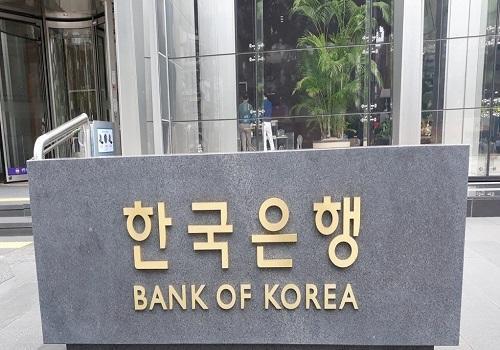
South Korea’s Q4 GDP Growth Ranks 29th Amid Domestic Slump
The latest economic data from South Korea has painted a concerning picture for the country’s economic growth. According to a report by the Bank of Korea (BOK), South Korea’s real gross domestic product (GDP) growth in the October-December period was a meager 0.066%. This ranking placed South Korea at 29th among OECD member countries and China, a significant decline from previous periods.
The sluggish growth has been attributed to a range of domestic factors, including a decline in private consumption and a slowdown in exports. The country’s economy has been facing several challenges, including a prolonged pandemic, supply chain disruptions, and rising inflation, which have all taken a toll on consumer spending and business confidence.
The United States, on the other hand, fared much better, with GDP growth expanding by 0.607 percent in the same period. This placed the US at 17th on the list of countries with the fastest-growing economies. Japan also showed a respectable growth rate of 0.556 percent, ranking 20th globally.
The South Korean government has implemented several measures to stimulate economic growth, including fiscal stimulus packages and monetary policy easing. However, the impact of these measures has been limited, and the economy continues to struggle.
The Q4 GDP growth numbers are a significant departure from the previous quarter, which saw a growth rate of 1.1%. The decline is a clear indication that the South Korean economy is facing significant headwinds, and the government will need to take more decisive action to get the economy back on track.
The impact of the pandemic on the South Korean economy has been significant. The country’s tourism industry, which is a major contributor to the economy, has been severely impacted, with international travel restrictions and social distancing measures taking a toll on hotel bookings and tourist arrivals.
The manufacturing sector has also been affected, with supply chain disruptions and shortages of key components impacting production levels. The country’s major export industries, such as electronics and automobiles, have also been impacted by the pandemic, with demand slowing down and supply chains being disrupted.
The government has implemented several measures to support the economy, including a COVID-19 relief package worth 40 trillion won ($33 billion), which included cash handouts to low-income households and small businesses, as well as support for the manufacturing sector. The central bank has also cut interest rates to stimulate borrowing and investment.
Despite these efforts, the economy remains sluggish, and the government will need to take more decisive action to support the economy. This may include further fiscal stimulus packages, monetary policy easing, and structural reforms to boost competitiveness and attract foreign investment.
The Q4 GDP growth numbers are a warning sign that the South Korean economy is facing significant challenges, and the government will need to take immediate action to address these issues. The country’s economy has traditionally been driven by exports, but the pandemic has disrupted global supply chains and reduced demand for South Korean products.
The government will need to diversify the economy and reduce its reliance on exports. This may involve investing in emerging industries such as renewable energy, biotechnology, and artificial intelligence, as well as promoting domestic consumption and reducing income inequality.
In conclusion, South Korea’s Q4 GDP growth numbers are a cause for concern, and the government will need to take immediate action to address the challenges facing the economy. The country’s economy has traditionally been a key driver of global growth, and it is essential that it returns to a path of strong and sustainable growth.




